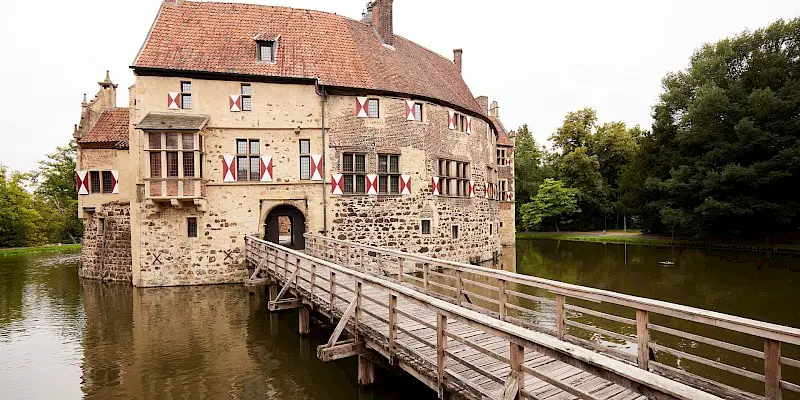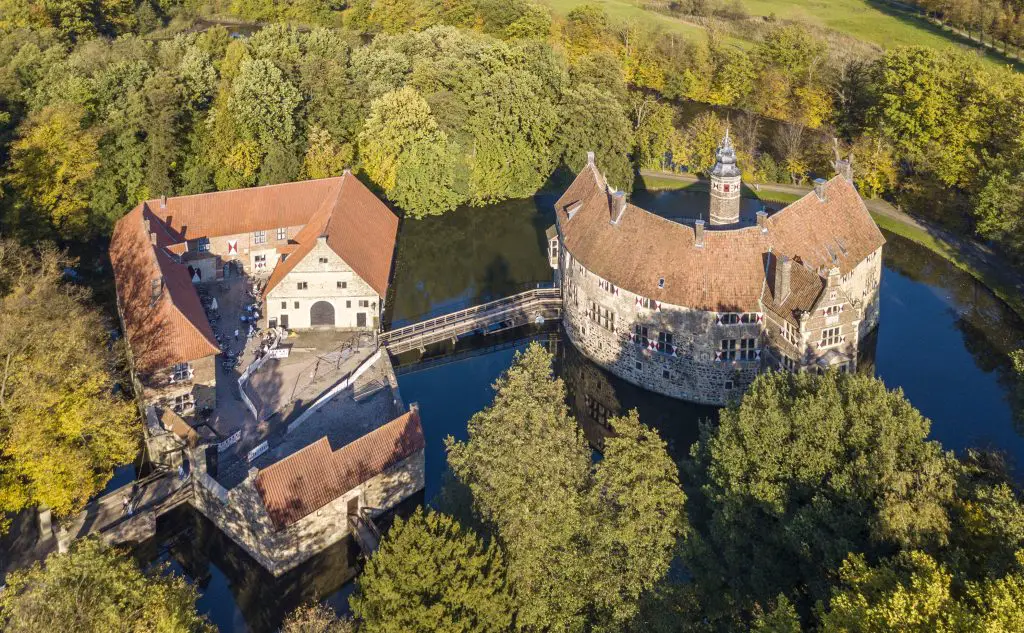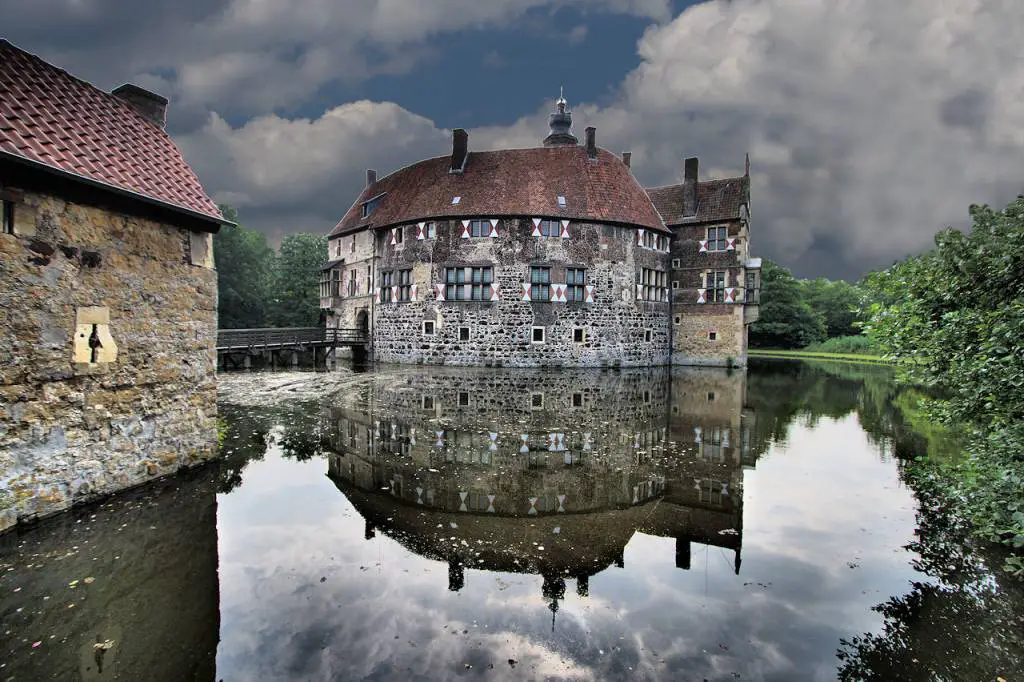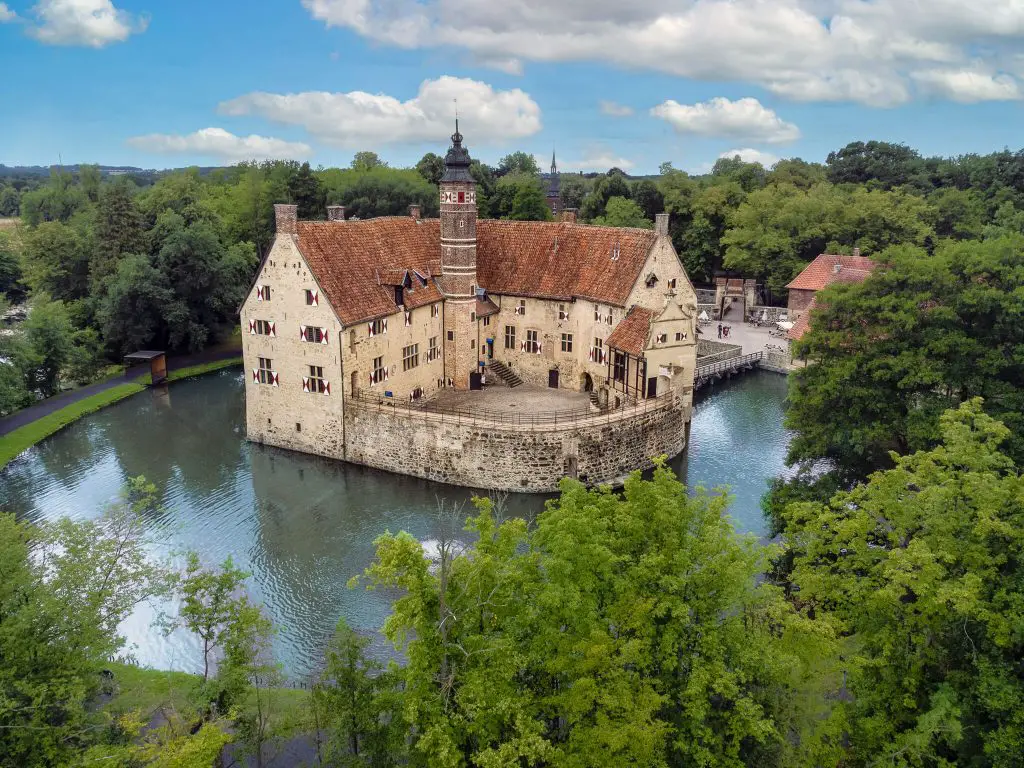Vischering Castle, located in Lüdinghausen, North Rhine-Westphalia, is the quintessential moated castle in the Münster region of Germany. This area boasts a high concentration of castles, palaces, and fortifications, with Lüdinghausen alone having three. The castle features an outer defensive courtyard, defensive gateways, a moat, drawbridge, main building, and chapel. The sandstone walls, red tile roofs, and their reflections in the moat create picturesque views amid the wooded surroundings.

Originally constructed by Bishop Gerhard von der Mark to counter a second castle built by the Von Lüdinghausen family, Vischering Castle later became the seat of the Droste zu Vischering Family. “Droste” is the local title for hereditary noble administrators serving the Bishops of Münster. The moat is constantly replenished by a side-arm of the River Stever, while the outer defensive courtyard houses business and farm buildings.

The main building, a horseshoe-shaped three-story structure with a heavy outer wall, surrounds an inner courtyard closed off by the chapel and a lower defense wall. Although a castle keep was removed during Renaissance renovations and a fire in 1521 led to reconstruction on the existing foundation, the castle’s defensive character somewhat diminished with the addition of windows and a large bay, making it more livable.

Despite these changes, the site still exudes the essence of a feudal-age moated castle. Minimal damage occurred during a World War II air attack.

Today, Vischering Castle is home to the Münsterlandmuseum, featuring an exhibit on knighthood for children, along with a cafe-restaurant. It serves as a cultural center for Kreis Coesfeld and is open for visits during specified hours. The castle’s exterior can be admired at any time.
RECOMMENDED: Russian Orthodox Church in Amrakits Village, Severely Damaged in the 1988 Spitak Earthquake Still Attracting Tourists